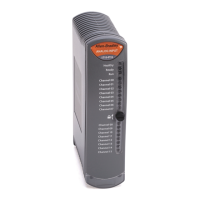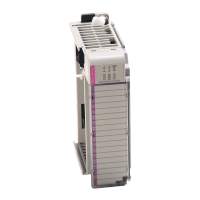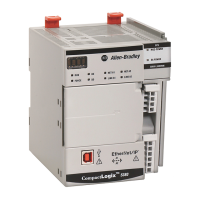Rockwell Automation Publication 1715-UM001J-EN-P - December 2020 51
Chapter 2 Installation Instructions
Cooling Requirements
The 1715-AENTR adapter is designed to operate in its specified environment
without forced air cooling. Forced air cooling can be needed in individual
circumstances, such as when the system shares its enclosure with other heat
producing equipment.
Adequate ventilation must be provided for the system and the ambient
temperature in the enclosure must not be higher than the maximum operating
value of 60 °C (140 °F).
The adapter dissipates all power that it uses as heat. This is the power that is
supplied to the terminals on the 1715-A2A adapter base unit. The I/O modules
dissipate some of the power they take from the field power source as heat. The
actual amount of heat depends on the number of channels in use.
The 1715-AENTR adapter is open-type equipment that is rated IP20. This
provides protection against solid objects over 12 mm (0.47 in.), but does not
provide protection against liquids.
Heating Requirements
If enclosure is in colder environments, temperatures must be kept at
-20 °C (-4 °F) or above.
Specify an Enclosure
An enclosure for the 1715 Redundant I/O System must be designed for the
specific environmental conditions that are present. It must support the weight
of the system, provide mechanical protection, and remove the heat that the
system creates. If the application of the adapter is not using existing power
sources, the power supply units can be placed inside the enclosure.
System Software The firmware on your 1715 Redundant I/O System can be updated with the
following ControlFLASH™ files:
ATTENTION: In high demand energise to trip and continuous demand
mode of operation additional protection will need to be in place to
inherently limit each 1715-AENTR power supply to a maximun 32 V.
IMPORTANT
Cooling by Convection: For correct cooling of the equipment, fit
the base units in the vertical plane and orientate so the modules
are upright, with their ventilation slots at the top and bottom.
ATTENTION: The modules contain static-sensitive devices that can be
damaged by incorrect handling. Label the exterior surface of the
enclosure to caution personnel to observe anti-static precautions when
handling the modules.

